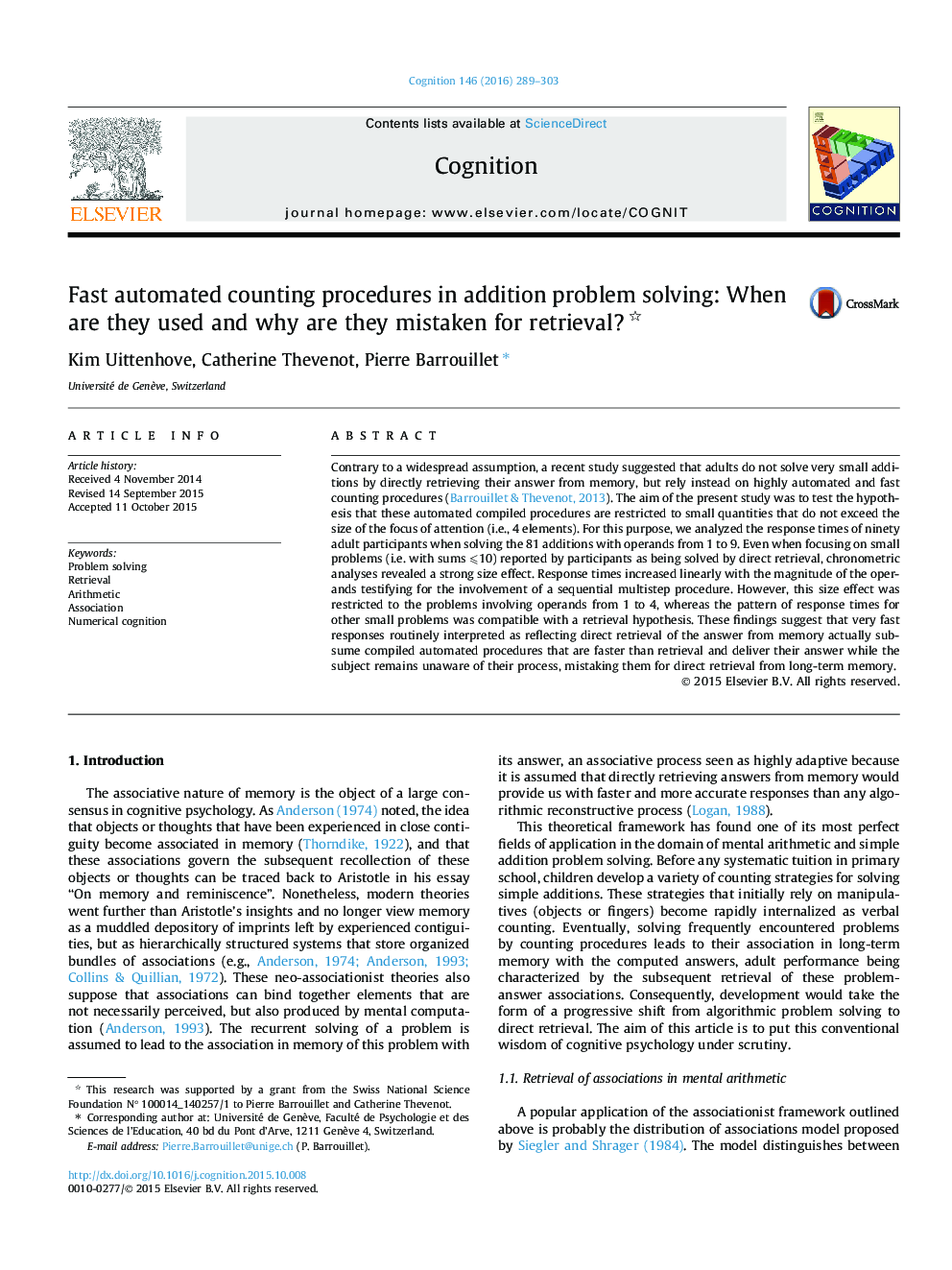| کد مقاله | کد نشریه | سال انتشار | مقاله انگلیسی | نسخه تمام متن |
|---|---|---|---|---|
| 7286431 | 1474121 | 2016 | 15 صفحه PDF | دانلود رایگان |
عنوان انگلیسی مقاله ISI
Fast automated counting procedures in addition problem solving: When are they used and why are they mistaken for retrieval?
ترجمه فارسی عنوان
روش سریع شمارش خودکار علاوه بر حل مسئله: زمانی که آنها استفاده می شوند و چرا آنها برای بازیابی اشتباه هستند؟
دانلود مقاله + سفارش ترجمه
دانلود مقاله ISI انگلیسی
رایگان برای ایرانیان
کلمات کلیدی
حل مسئله، بازیابی، ریاضیات، اتحادیه، شناخت عددی،
موضوعات مرتبط
علوم زیستی و بیوفناوری
علم عصب شناسی
علوم اعصاب شناختی
چکیده انگلیسی
Contrary to a widespread assumption, a recent study suggested that adults do not solve very small additions by directly retrieving their answer from memory, but rely instead on highly automated and fast counting procedures (Barrouillet & Thevenot, 2013). The aim of the present study was to test the hypothesis that these automated compiled procedures are restricted to small quantities that do not exceed the size of the focus of attention (i.e., 4 elements). For this purpose, we analyzed the response times of ninety adult participants when solving the 81 additions with operands from 1 to 9. Even when focusing on small problems (i.e. with sums ⩽10) reported by participants as being solved by direct retrieval, chronometric analyses revealed a strong size effect. Response times increased linearly with the magnitude of the operands testifying for the involvement of a sequential multistep procedure. However, this size effect was restricted to the problems involving operands from 1 to 4, whereas the pattern of response times for other small problems was compatible with a retrieval hypothesis. These findings suggest that very fast responses routinely interpreted as reflecting direct retrieval of the answer from memory actually subsume compiled automated procedures that are faster than retrieval and deliver their answer while the subject remains unaware of their process, mistaking them for direct retrieval from long-term memory.
ناشر
Database: Elsevier - ScienceDirect (ساینس دایرکت)
Journal: Cognition - Volume 146, January 2016, Pages 289-303
Journal: Cognition - Volume 146, January 2016, Pages 289-303
نویسندگان
Kim Uittenhove, Catherine Thevenot, Pierre Barrouillet,
